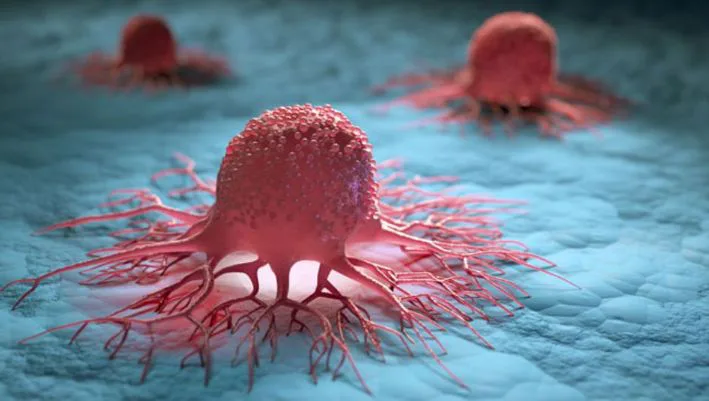Jonathan Dodd and Professor René Oudmaijer’s recent research at the University of Leeds challenges the assumption that massive Be stars are mainly found in double star systems. The study, however, suggests evidence supporting the idea that these stars might be part of triple star systems. Thus, introducing a new perspective in stellar science.
Read MoreTag: research
Robotic Needle Achieves Precision Navigation in Living Model
When it comes to cancer-related fatalities, lung cancer tops the list. One of the main reasons could be the presence of tiny tumors in deep within the lung tissue. This poses a major challenge for surgical accessibility. To address this challenge, researchers at UNC Chapel Hill and Vanderbilt University have been trying to fabricate an exceptionally flexible yet durable robot. The device will have the capability of maneuvering through the intricate terrain of the lungs.
Read MoreSEI Insights in Advanced Aqueous Potassium-Ion Batteries
In the recent times, there has been significant focus around the development of high-performance energy storage solutions. Consequently, the idea has become the driving force behind the advancing battery technology. With the emergence of renewable energy sources such as wind, solar power including electric vehicles (EVs), the need for advanced energy storage systems has grown exponentially.
Read MoreEarth’s Electrons: Unexpected Contributors to Lunar Water Formation
Our planet, Earth, is not merely a rock in space but an interesting entity with various forces acting within and outside of it. For instance, magnetosphere. Earth’s core consists of molten iron. This liquid iron creates electric currents. Which, consequently, generate a magnetic field that surrounds Earth. This magnetic field extends far out into space, creating the magnetosphere. It acts as a formidable defence against the solar wind.
Read MoreLNP Formulation: To Transform Production of mRNA Therapeutics
The mRNA vaccines were made within no time during the second year of the COVID-19 pandemic. Thus, highlighting the importance of tiny fat particles or the lipid nanoparticles (LNPs) in medicine. LNPs are like special cars for delicate RNA treatments and vaccines. They not only shield the RNA (from degradation), but they also make sure it gets to its targeted location.
Read MoreBlack holes in the Hyades Star Cluster
In an international collaboration between astronomers from University of Padua (Italy), the Institute of Cosmos Sciences of the University of Barcelona (ICCUB) and the Institute of Space Studies of Catalonia (IEEC), there are indications that multiple black holes might exist within the Hyades cluster.
Read MoreBook Review: Chaos by James Gleick
James Gleick is a prolific author and essayist renowned for his insightful exploration of the intersection between science, technology, and their profound cultural impacts. In “Chaos: Making Sense of a Complex World,” he introduces us to a world where order arises from apparent disorder. It was first published in 1987.
Read MoreDecoding the Immune System’s GPS: How Cells Find Their Way Through Molecular Mazes
Immune system’s ability to distinguish between infections and inflammation is pretty much fascinating. The combination of mechanisms and signals is quite intrigue. And scientists feel there is much to explore. This clearly shows how sophisticated our body’s defense mechanisms are. Our immune system has been protecting us from a wide range of threats. And yet at the same time evolving over a span of millions of years.
Read MoreBook Review: DMT The Spirit Molecule by Rick Strassman
DMT: The Spirit Molecule is an engaging book written by Dr. Rick Strassman. It was first published in 2001. Its focus is on psychedelics, particularly DMT (Dimethyltryptamine). Dr. Strassman suggests that because DMT is present in our bodies, the pineal gland located in our brains might be where it originates. Hindus see it as the seventh chakra location, and Descartes thought it’s where the soul resides. Although modern medicine remains uncertain about the gland’s function. Research behind the book took almost five years. During the tenure, Dr. Strassman “administered approximately…
Read MoreCoordinated Gene Expression in Tumor Microenvironment: Cancer Research
Researchers at the Ludwig Cancer Research have surfaced a remarkable discovery in the realm of cancer research. They have identified a specific duo of genes which are involved in shaping the behavior of a particular type of immune cell within tumors. Like a hidden code, the duo genes guide these cells in during the progression of cancer.
Read MoreInterview: Dr. Jay T. Lennon, Microbiologist at Indiana University, Bloomington
Meet Dr. Jay T. Lennon. Within the intricate tapestry of microbiology, a realm of microorganisms thrives, weaving the intricate threads of ecosystems, interactions, and even human health. Dr. Lennon, a distinguished luminary in the field of microbial ecology, has passionately dedicated his career to unraveling the enigmatic world of these microscopic life forms. He emerges as an insightful figure who delves deep into the intricate relationships governing microbial communities.
Read MoreBook Review: The Epigenetics Revolution by Nessa Carey
Let’s step into the captivating world of epigenetics. It is a rapidly evolving science rarely explored beyond scientific literature. Very deftly, Dr. Nessa Carey has connected academia and scientific journalism into her groundbreaking book “The Epigenetics Revolution: How Modern Biology Is Rewriting Our Understanding of Genetics, Disease, and Inheritance”. The book was first published in 2012.
Read MoreNew Exoplanets Discovered in GJ 367: A Cosmic Surprise
In an effort to explore the mysterious GJ 367 planetary system, an international team of astronomers embarked on a dynamic quest. Armed with the High Accuracy Radial velocity Planet Searcher (HARPS), they set out to unravel the secrets hidden in the vastness of space.
Read MoreInterview: Dr. Monica Dus, Nutrigenomics Scientist at University of Michigan, United States
Meet Dr. Monica Dus, an extraordinary trailblazer in the field of biology whose passion for unravelling the mysteries of our genetic makeup and its interaction with nutrition has earned her widespread recognition. As an Associate Professor with Tenure at the prestigious University of Michigan, she stands at the forefront of cutting-edge research in Molecular, Cellular, and Developmental Biology. Beyond academia, Dr. Dus is a 2023 Guggenheim Fellow in Biology, a distinction that further underscores her outstanding contributions to the scientific community.
Read MoreLactate Enriches Neurogenesis: Neuronal Differentiation
Scientists at Tohoku University, Sendai, Japan made an exciting discovery regarding cellular mechanisms that assist in developing our brains. They discovered that lactate plays an important role in helping neural stem cells become specialized neurons. Lactate happens to be the by-product of exercise and metabolism. Researchers even gave this process a fancy name: neuronal differentiation.
Read More














